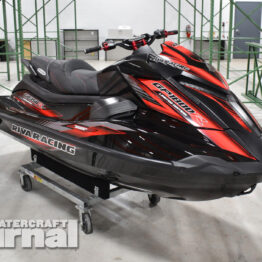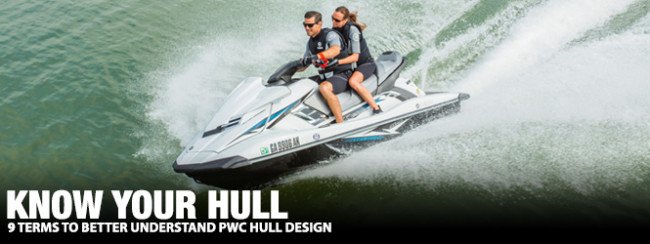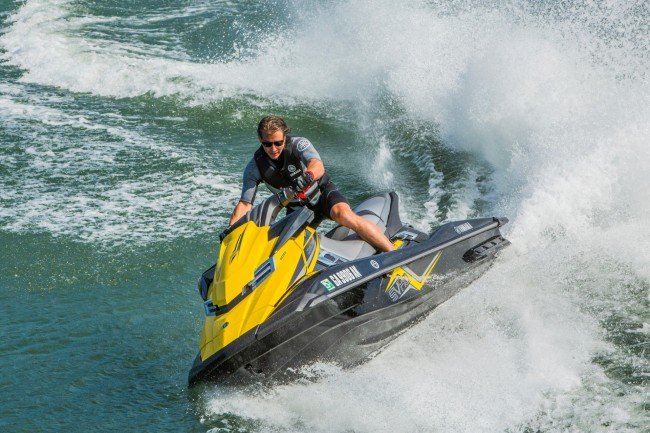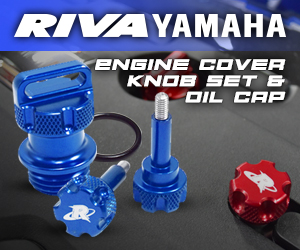For those coming to The Watercraft Journal for the first time might find terms like “Deep-V,” “S3” and “T3” – as well as plenty of others – being bandied about without much clarification. While this isn’t the place to delve deeply into the science being these and many other terms used in describing the characteristics of hull design, we will touch on many core terms that are used commonly and some examples to go with each.
Pulling our “9 Terms for Laymen” list from a phenomenal article (“The Hull Truth”) published on Boating.com, we found the following breakdown to be notably useful in helping the novice learn a little more about the intricacies of hull design. Below we’ve included all nine aforementioned “terms for laymen” as defined by the original article (in italics) as well as added examples and applications to the watercraft industry.
Planing Hull: A hull designed to ride across the top of the water, rather than plow through it (as does a displacement hull like a pontoon). These are similar to shallow-V hulls or those found on less aggressive, recreational-class PWC like Sea-Doo’s GTI models or Yamaha’s VX series.
Stepped Hull: A hull with a trough that runs from the outer chine all the way to the keel, creating separate forward and aft surfaces. The junction of the two appears as a stair step. Sea-Doo’s “S3” hull literally means “Stepped x 3”, and is found on the RXT and GTX models. The design is often used on offshore raceboats, and was applied to their longer 3-seater hulls in 2008.
Tri-Hull: A V-hull with two additional outside hulls; also called gull-wing hull. This might be found in a deck boat or catamaran. You won’t find many applications of this in the PWC world outside of some one-off custom designs, although recent “Fast Pods” – a pair of pontoon-like devices attached to the bond rails of runabouts for fishing applications – do slightly benefit from this design.
V-Hull: A boat with a pointed bow and V-shaped bottom, at least in its forward section, for cutting through the water and softening the ride. Currently, the most notable V-hulls (or “deep-V”) on the market are those by Kawasaki. The Ultra 310X models have made a name for themselves almost exclusively by the success of their rough water-friendly V-hull design.
Chine: Where the side of the boat transitions to the bottom of the boat, creating a corner. The sharper the corner, the “harder” the chine and the stronger the bite in turns. Yamaha’s FZ series (FZR and FZS) are known for their “soft chine” design, which allows for a gentler roll in sharp corners. Sea-Doo’s aggressive RXP-X features a similar design. Both of these are aimed at producing suction (ie. traction) while in high speed turns.
Reverse Chine: A two-corner chine; before the bottom meets the side, it forms an upside-down V-shape to deflect spray away from the boat. Although you won’t see it as prominently in PWC design, you will find reverse chines put into effect as “bow spray deflectors” (particularly towards the front) of most 3-seater runabouts, most notably the Kawasaki Ultra and Yamaha FX hulls.
Keel: The centerline, or spine, of a boat. The sharper the keel’s angle (deadrise), the softer the ride — though sometimes at a cost in speed. This is precisely why the Kawasaki Ultra doesn’t wield the highest top speed but fares so well in rough conditions, and why Yamaha’s FX (over the FZ models) have been registering such high top speeds.
Pad: A flat or nearly flat area on the running surface toward the back of the boat. Those familiar with the Sea-Doo RXP-X will note the ski’s narrow pad or running surface. This makes for minimal drag. Yamaha’s SuperJet, on the other hand, as a very wide, flat pad for optimal traction (given the small size of the craft).
Strakes: Horizontal or nearly horizontal lengthwise surfaces that help lift the boat onto plane. Almost all current 3-seater runabouts feature strakes running the length of the craft, as manufacturers incorporate strakes to lift the craft up out of the water as quickly as possible, thus making for a dryer ride.




















Now if you just illustrated the parts too/showed photos rather than just writing the text!
which hull is stronger the s3 or t3
Stronger? Like PHYSICALLY? They both pre-date CM-Tech, so technically, they’re equally as durable.